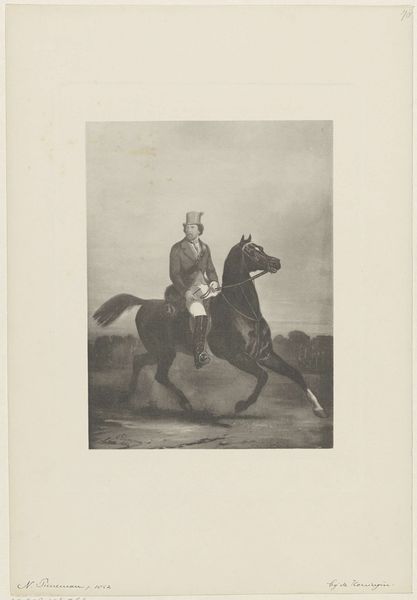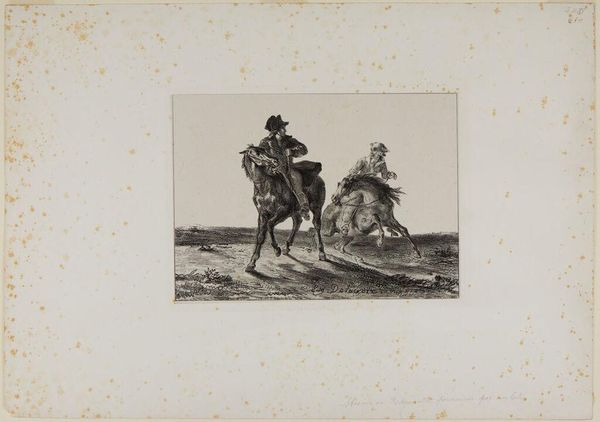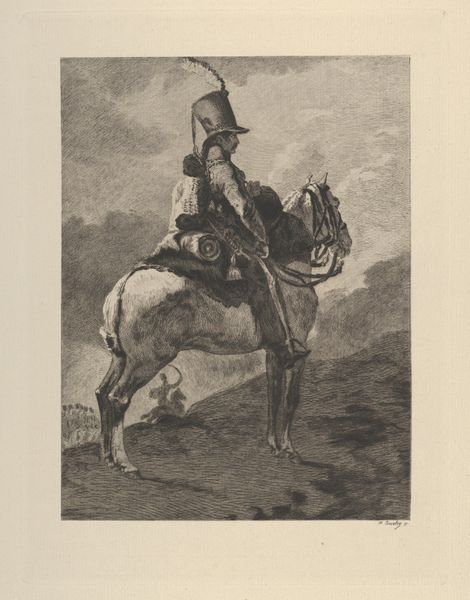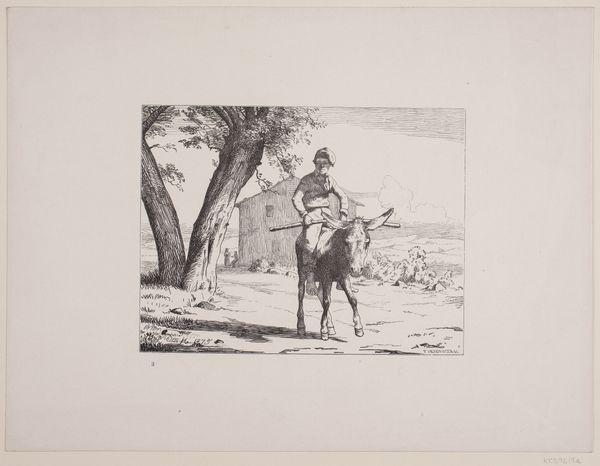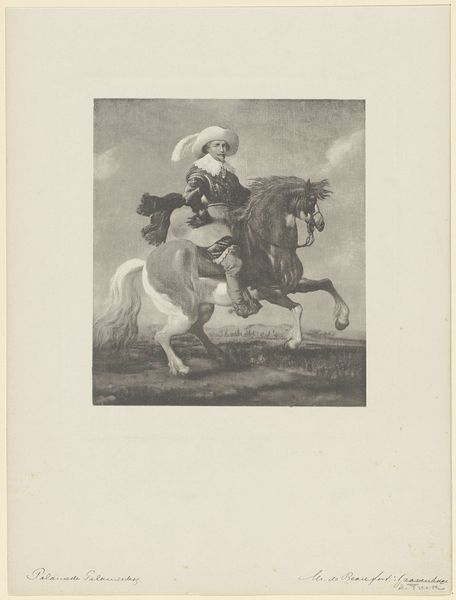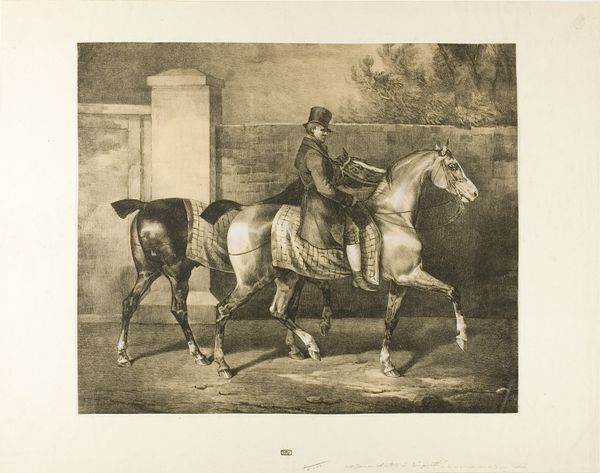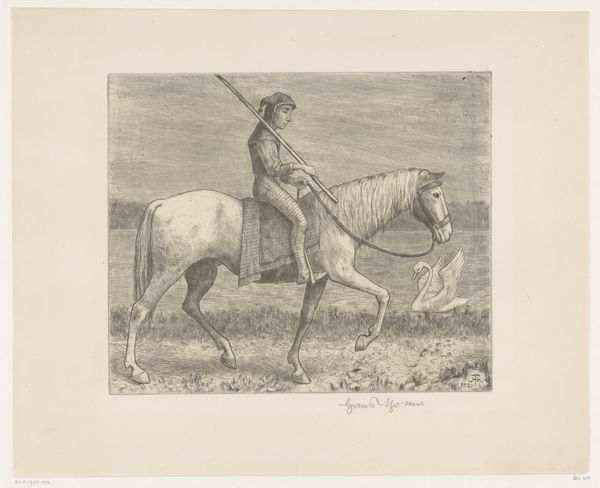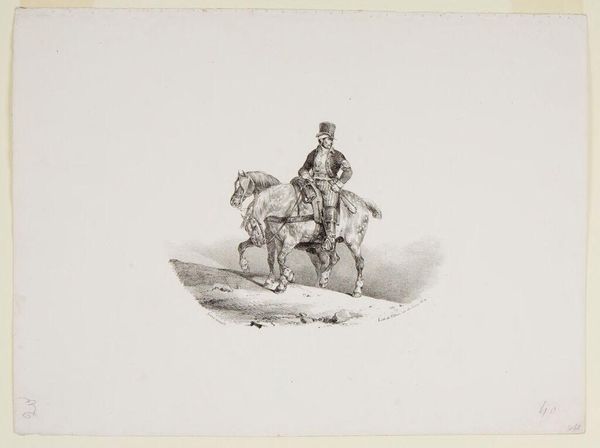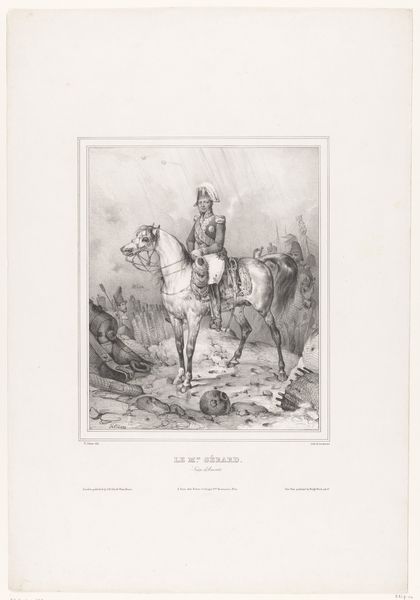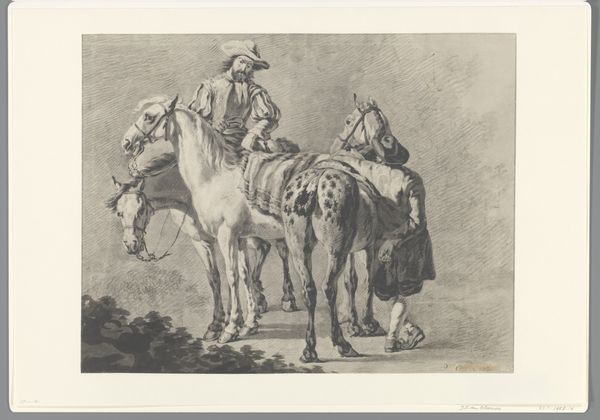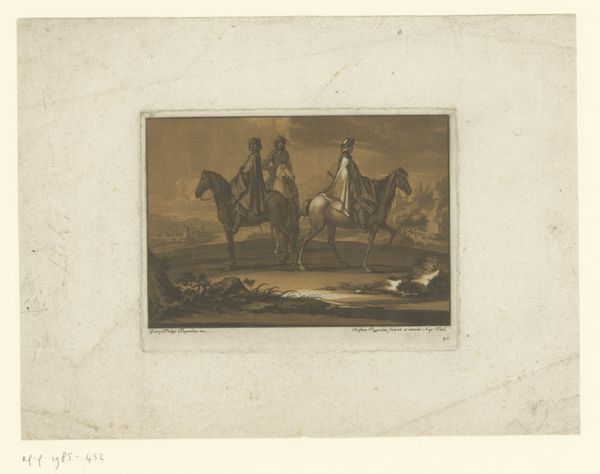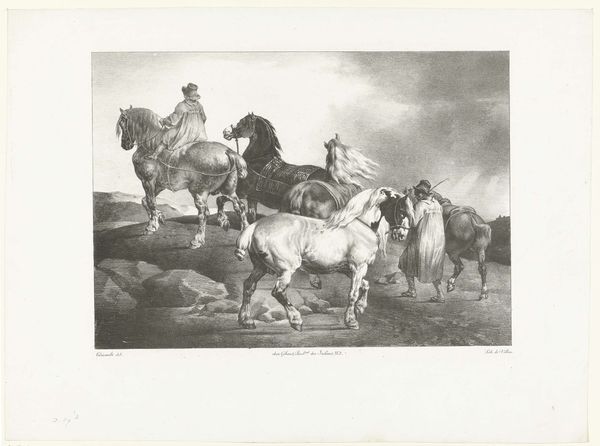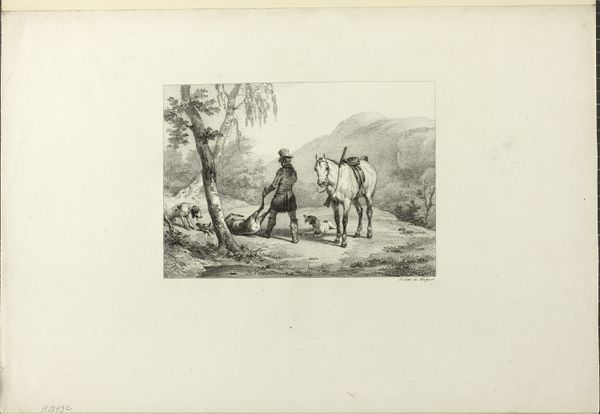
print, engraving
#
portrait
#
print photography
# print
#
old engraving style
#
landscape
#
romanticism
#
genre-painting
#
engraving
Dimensions: height 200 mm, width 232 mm, height 260 mm, width 299 mm
Copyright: Rijks Museum: Open Domain
Editor: Here we have Géricault’s “Jockey on an English Thoroughbred Horse,” an engraving from 1823, part of the Rijksmuseum collection. The monochromatic palette evokes a sense of stillness, despite the subject matter. What’s your take on this print? Curator: Consider the material process of creating this image. It is not a painting. Géricault chose engraving, a printmaking method reliant on labor, repetition, and reproducibility. How does this impact our understanding of the romantic vision often ascribed to his paintings? Was he, through print, attempting to democratize access to the image of the equestrian elite? Editor: That's a very interesting point! So you're saying the choice of medium – engraving – might be a commentary on class and accessibility, a material gesture extending beyond the artwork. Curator: Precisely. And consider the paper, the ink, the tools needed. These are all commodities. Engraving allowed for a wider circulation of images and arguably a wider participation, through consumption, with themes that were, perhaps, beyond reach for most people. How might we interpret Géricault's choice of reproducing his work through this medium? Editor: That perspective has really broadened my view of this artwork, transforming it from a simple genre scene into a complex comment about production and consumption in the art world of the 19th century. Curator: It is essential to look past the aesthetic pleasure and explore the complex interplay of materials, production, and social accessibility in art history. Editor: Thanks, this has opened my eyes to a different way to consider the artwork and its place within a much broader societal and historical context.
Comments
No comments
Be the first to comment and join the conversation on the ultimate creative platform.
